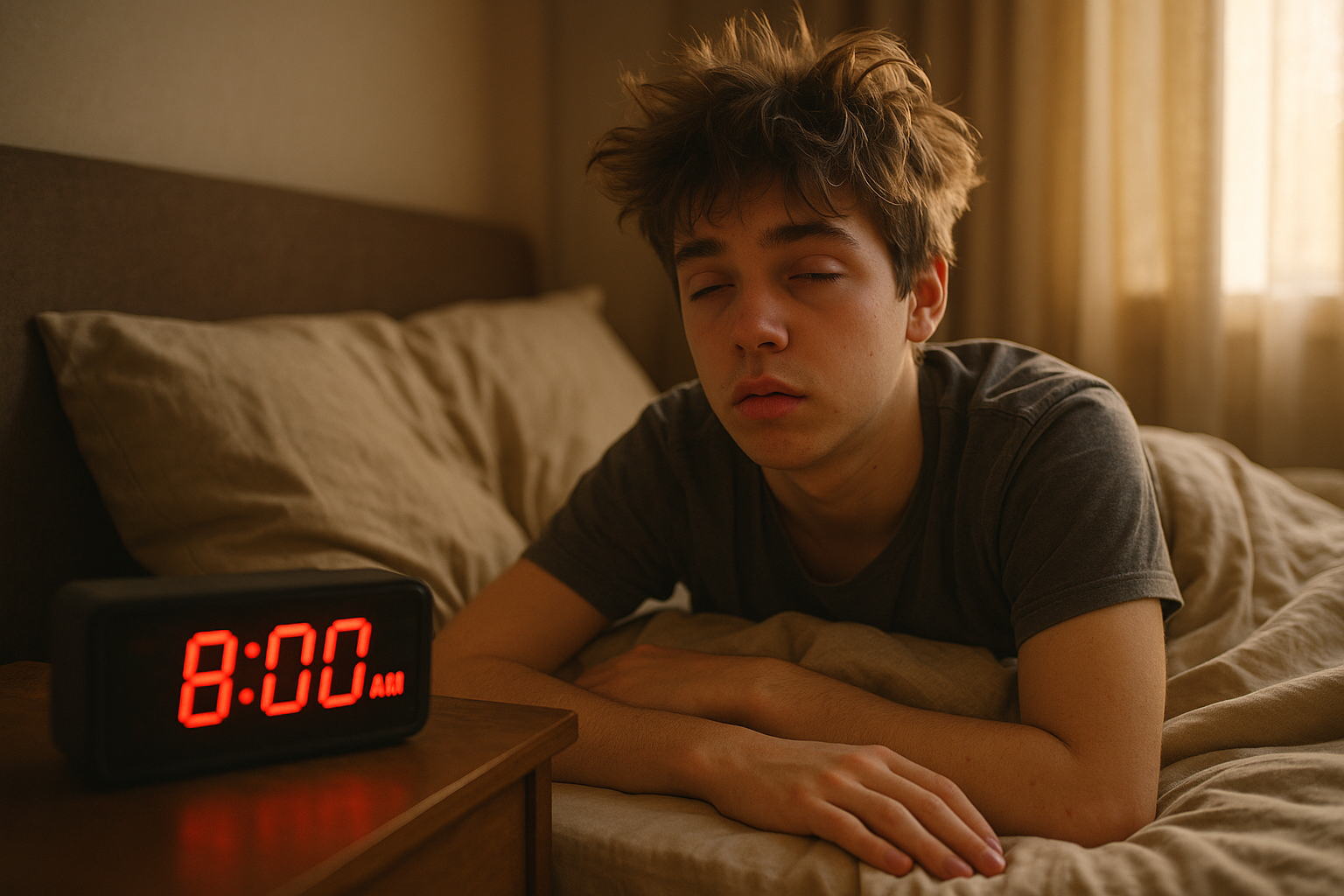Teenage Sleep Patterns - A Parents Guide
If it feels as though your once obedient eleven-year-old has morphed overnight into a midnight-loving teenager, you’re not imagining things. Biological clocks, social pressures and school timetables all collide in adolescence, bending sleep in ways parents (and young people) can’t ignore. Here’s a UK-centred look at what changes, why it matters and what families and schools can do about it.
1 | How much sleep is “enough”?
Children 6–12 yrs – NHS leaflets put the sweet spot at 9 – 12 hours per night. (Oxford University Hospitals)
Teenagers 13–18 yrs – The NHS repeatedly cites a slightly lower but still hefty 8 – 10 hours. (St George's Hospital Trust)
That’s only a modest drop; teenagers still need plenty of shut-eye—just a little less than their younger selves.
2 | Puberty rewires the body clock
Researchers at Oxford’s Sleep & Circadian Neuroscience Institute show that melatonin release shifts up to two hours later in puberty, and the build-up of “sleep pressure” slows down. The result is a circadian phase-delay that makes 10–11 p.m. the new biological bedtime for many teens. (scni.ox.ac.uk)
3 | Are UK teens actually getting those 8–10 hours?
Hardly. England’s 2024 HBSC factsheet found that fewer than one-quarter of 15-year-olds manage even 8½ hours on school nights, and just under half of 13-year-olds do. (hbscengland.org) A recent overview in The Times puts the average secondary-school pupil at about seven hours. (The Times)
4 | Why does it matter?
Sharper brains: A 2025 study of 3,000 UK adolescents showed that those who went to bed earliest and slept longest out-performed peers on vocabulary and problem-solving tests. (The Guardian)
Mental health: Millennium Cohort data link long sleep-onset latency and late bedtimes with higher risks of emotional and behavioural difficulties at age 14.
5 | Roadblocks on the way to better sleep
What gets in the way?
Early school bells In the Oxford TeenSleep pilot, delaying start time gained pupils ~45 minutes of extra sleep and improved alertness.
Evening screen time A 2024 House of Commons report details widespread late-night phone use, with some pupils checking devices at 2 a.m.
Heavy homework & activities National surveys tie packed after-school schedules to later bedtimes and shorter sleep.
6 | What parents, teens & schools can do
Keep wake-ups steady – Aim for no more than a one-hour lie-in at weekends to curb Monday “social jet-lag.
Device curfew – Park phones/tablets outside bedrooms at least an hour before lights-out; use blue-light filters if screens are unavoidable.
Lobby for later timetables – The Department for Education allows flexible-start pilots; governors and parent councils can press for trials.
Build in a wind-down routine – Reading, journalling or mindfulness beat last-minute homework and doom-scrolling.
Use naps wisely – A 20-minute nap before 3 p.m. can top up sleep without harming the night-time stretch.
Conclusion
The adolescent shift isn’t laziness—it’s biology. Yet UK data show most teens fall at least an hour short of what their brains and bodies need, with clear academic and emotional costs. Aligning family habits, school schedules and digital use with teen biology can close that gap—helping young people stay healthy, sharp and ready for the day ahead.







Share:
4-7-8 Wind-Down: The One-Minute Sleep Switch